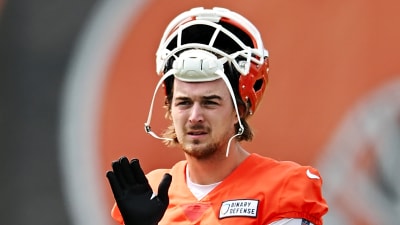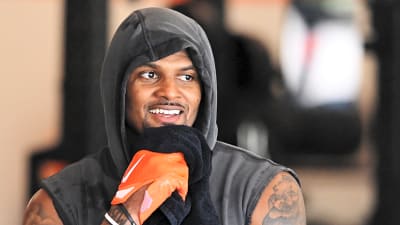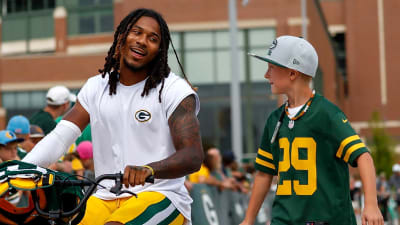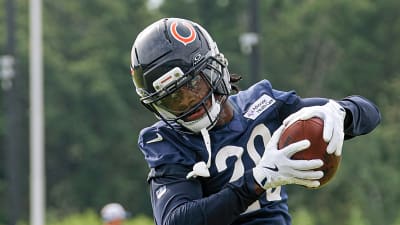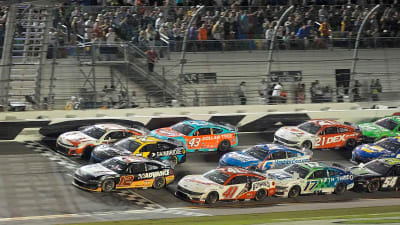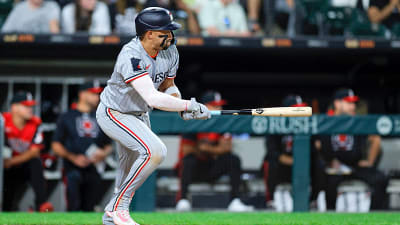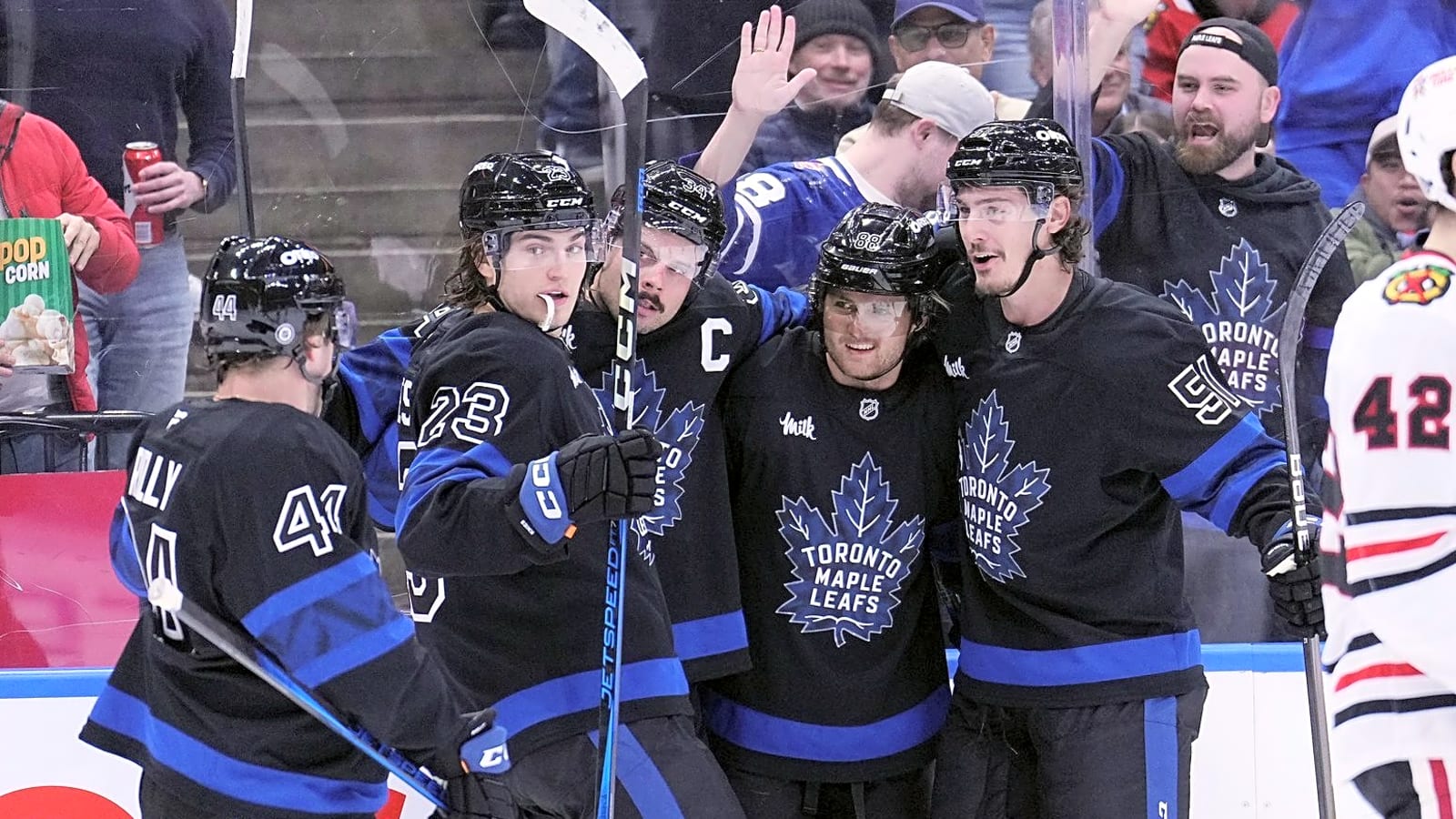
We’ve reached the final days of August, which means NHL training camps are just around the corner. With transactions being few and far between, teams have most of their rosters locked down and more or less know what their salary cap situations look like for the upcoming season.
That means it’s time to officially kick off this season’s salary cap rankings at Daily Faceoff, in which we take a look at all the different aspects of managing and excelling in the salary cap era and rank teams based on how well they do. That’s all done through a somewhat complex process and system, which I have outlined in a summary of its own for your convenience.
As is always the case with the bottom quarter of the list, it’s littered with teams that are either in the midst of rebuilding or just beginning their rebuilds, as the carelessness of their salary cap management forced them into this situation. But, there’s also a couple of teams who have contended for the playoffs for many years now and may find themselves at the beginning of their cap nightmare – unless they change their ways.
32. New York Islanders
Contract Rating: 25th
Contracts with No-Trade/No-Move Clauses: t-28th
Dead Cap Space: 9th
Quality of Core: 22nd
Cap Space to Skill Differential: 30th
While being last on this list is rarely good news, there is at least a light at the end of the tunnel for New York Islanders fans: the man who is responsible for this disaster is finally gone. While Lou Lamoriello (*cough* Barry Trotz *cough*) helped the Isles to their most successful run since the early ’80s, his commitment to that group as they aged and drifted towards mediocrity hurt the team significantly. With Mathieu Darche at the helm, New York begins rebuilding, and hopefully that will give them enough time to clear out all the garbage on their cap sheets.
The Islanders’ biggest problem is that any contract with a notable amount of money attached to it isn’t a good one. While Mathew Barzal, Adam Pelech and Ilya Sorokin are all around market value, almost every other contract with $2 million or more on it has negative value, and Bo Horvat, Scott Mayfield, Ryan Pulock and Alex Romanov all have significant term. Add in the fact a lot of these contracts are locked in to no-move or no-trade clauses, and a team that finds itself pretty close to the salary cap despite how bad they are suggests that the only way out of this is to sit and wait. The rebuild is the best way to kill that time, so we’ll see how well Darche commits to it.
31. Chicago Blackhawks
Contract Rating: 31st
Contracts with No-Trade/No-Move Clauses: 4th
Dead Cap Space: 29th
Quality of Core: 31st
Cap Space to Skill Differential: 18th
The Chicago Blackhawks cap situation is a good example of how just because it looks bad doesn’t entirely mean that it is bad. A quick look at the deals they have signed and you’ll notice that there isn’t a lot of value to be found. But this is what a team’s cap sheet looks like when they haven’t quite nailed down a core and are mostly just trying to hit the salary floor with the best players that want to join them.
When you’re using your salary cap space to take on bad deals (like Andre Burakovsky’s or Ilya Mikheyev’s) or retain salary for draft picks and prospects, it’s going to look uglier than it actually is, especially when none of those pieces is locked in long-term yet and the few that are have some room to grow. On top of that, Chicago is just so bad on the ice that it’s tanking the on-ice value of their players, which makes every contract look worse in my model.
If I have one complaint about the Blackhawks’ current process, they retain older talent a little bit more than a rebuilding team should. Sure, you want to have some veterans around to teach and support the young guys, but Chicago often punts on selling high on these players and instead re-signs them, only for them to not continue putting up that value on the ice. Jason Dickinson, Ryan Donato, Nick Foligno and Petr Mrazek are all examples of players that could have been traded when they had good value attached to them, but the Blackhawks chose to extend them instead. Mrazek may be the best example of the downside of this, as he ended up being dealt a year later for Joe Veleno, who Chicago proceeded to buy out this summer. It just feels like wasted asset management.
30. Boston Bruins
Contract Rating: 28th
Contracts with No-Trade/No-Move Clauses: t-18th
Dead Cap Space: 10th
Quality of Core: 18th
Cap Space to Skill Differential: 31st
It finally happened. The Boston Bruins finally fell off. For years, they were an inevitable powerhouse despite any setbacks, and it felt like they were never going to die. But last year, the wheels finally fell off, and the Bruins are now in retool mode, if not rebuild mode, and it shows with their current cap situation. While the true core pieces like David Pastrnak, Charlie McAvoy, Jeremy Swayman and Hampus Lindholm do salvage this group in some areas, Boston just hasn’t been able to find value elsewhere in their lineup.
The biggest culprits are Elias Lindholm and the newly signed Tanner Jeannot, whose contracts are some of the worst in the league. Add the underperforming Henry Jokiharju, Casey Mittelstadt, Andrew Peeke and Pavel Zacha into the mix, and that’s a lot of money tied up into players that aren’t performing for Boston. Even younger guys like Morgan Geekie and Mason Lohrei aren’t favored too well, even if they still have room to grow into their contracts.
Everything else about the Bruins’ cap sheet is more mediocre than bad, but Don Sweeny’s constant spending sprees have cost the team and likely sunk the long-standing dynasty that they were. Considering that Sweeney has fired three Jack Adams-winning coaches to deflect the blame, it’s a wonder that his seat isn’t hotter.
29. Philadelphia Flyers
Contract Rating: 30th
Contracts with No-Trade/No-Move Clauses: t-2nd
Dead Cap Space: 30th
Quality of Core: 14th
Cap Space to Skill Differential: 29th
Much like the Blackhawks, the Philadelphia Flyers’ ranking is more so due to the cost of committing to a rebuild than an indication of their long-term future. While they have many bad contracts in the system, like Nicolas Deslauriers, Christian Dvorak, Ivan Fedotov, Rasmus Ristolainen, and Dan Vladar, almost all of them have just one or two years remaining on the deals. If there’s any concern about those contracts, it’s that they were signed with good intentions by the Flyers themselves instead of them taking on other teams’ bad contracts, but as long as Daniel Briere learns from his (and the previous regime’s) past mistakes, that shouldn’t be a problem.
Beyond that, everything can be looked at in a positive light. Briere has been smart about handing out clauses on contracts, which opens up a lot more flexibility down the road. All of their dead cap space was use to clear out horrible contracts like Cam Atkinson and Kevin Hayes, and all of it will be gone next summer. Every long term contract belongs to an important piece of the team, and is either a great value deal or one that the player can grow into. The one-ice product isn’t exactly a good one, but I’d be surprised if the Flyers hover in this territory too long.
28. Nashville Predators
Contract Rating: 18th
Contracts with No-Trade/No-Move Clauses: t-5th
Dead Cap Space: 32nd
Quality of Core: 24th
Cap Space to Skill Differential: 24th
While I sang Barry Trotz’s praises as a head coach with the Islanders, I am still very hesitant to do the same about his ability as a general manager for the Nashville Predators. It feels like every move he’s made in recent months has been a bad one, both in the short and long term, and the louder the move, the larger the repercussions. His big splashes last summer all backfired spectacularly and look like some of the worst contracts in the league, and he’s added to that this summer with the Nicolas Hague trade. There’s even some concerns about Juuse Saros’ contract as his play has slowly slipped since he signed at a $7.74 million AAV for eight years.
Not a single contract signed to longer than four years looks promising at this point in time either. Even Filip Forsberg’s $8.5 million cap hit is creeping into bad territory as his game takes some steps back. The Preds are also spending a bit more than they should be, but that shouldn’t be a surprise given how much those pricey contracts last year went bad fast, on top of all the money they have allocated to buyouts and retained salary, most of which will be in better shape next summer.
If there’s one thing I’ll applaud Trotz for, it’s that he’s kept the clauses to a minimum. In a tax-free state where some teams insist on having one if they take a discount, he’s maintained a roster that can at least be traded. Then again, it’s easy to not hand out those clauses when you aren’t getting any discounts.
27. San Jose Sharks
Contract Rating: 32nd
Contracts with No-Trade/No-Move Clauses: t-5th
Dead Cap Space: 31st
Quality of Core: 21st
Cap Space to Skill Differential: 14th
While the San Jose Sharks’ cap situation isn’t perfect, it’s certainly been a lot worse. Flash back five years ago, and it was a nightmare. Brent Burns, Logan Couture, Evander Kane, Erik Karlsson, Martin Jones and Marc-Edouard Vlasic were all signed to expensive long-term contracts, and the Sharks even added Tomas Hertl into that group a couple years after. The escape plan looked like a long, painful process. But with Couture retired and Vlasic gone, all that remains of that group is Jones & Vlasic’s buyouts and Hertl & Karlsson’s retained salary, and only Hertl’s will still be on San Jose books in two years. It’s a lot of dead space, but it’s the cost of finally clearing that up.
While the Sharks still have a lot of bad contracts in their system, a lot of that is due to a classic move pulled in franchise mode in an EA Sports NHL game, where they toss money to players not worth the contract to hit the salary floor. Deals like Vincent Desharnais, Mario Ferraro, Barclay Goodrow, John Klingberg, Nick Leddy, Dmitry Orlov, Ryan Reaves and Alex Wennberg aren’t exactly great values, but none of them is signed long-term.
In fact, only William Eklund is locked in for the next four years, and he’s still on his entry-level contract this season. The future pieces of this team are already making a strong impact, and the Sharks have put themselves in a position where even two years from now, they can completely remake their entire cap sheet. They won’t be this low on the list too much longer the way things are going.
26. Minnesota Wild
Contract Rating: 14th
Contracts with No-Trade/No-Move Clauses: t-16th
Dead Cap Space: 26th
Quality of Core: 25th
Cap Space to Skill Differential: 20th
The good news for the Minnesota Wild is that the era of Zach Parise and Ryan Suter’s buyout cap hits taking up a significant portion of their salary cap space is finally over. They now take up a combined $1,666,666, a far cry from the $12-14 million that they’d taken up before. Those buyouts forced the Wild to spend efficiently, and they actually did a good job of it. As they enter their first summer without those handcuffs, maybe they needed them, because they haven’t improved their situation yet.
Minnesota has done a good job of signing their top players like Matt Boldy, Jonas Brodin, Joel Eriksson Ek, Filip Gustavsson, Kirill Kaprizov, Marco Rossi and Jared Spurgeon to market-value deals, and even secondary players like Marcus Foligno and Ryan Hartman, but what hurts them is the uncertainty surrounding this core. Only Boldy and Eriksson Ek are signed for at least four years, and only Brodin and Rossi join that list if you look for three-plus years. I’ve mentioned that as a good thing for teams like Philadelphia and San Jose, but cost certainty and security are much more important for playoff teams like the Wild.
You’ll notice that I omitted Brock Faber from the previous paragraph when he was very much a part of Minnesota’s core, but he’s a reason why they’re lower than they should probably be: his contract was very poorly rated by my model. That’s an example of the model most likely being way off, but it’s also because Faber’s underlying metrics just aren’t where they need to be. It’s nearly impossible to see him not grow into this contract and it be great value, but for now, it probably hurts the Wild across several categories.
25. Toronto Maple Leafs
Contract Rating: 24th
Contracts with No-Trade/No-Move Clauses: t-28th
Dead Cap Space: 12th
Quality of Core: 9th
Cap Space to Skill Differential: 24th
Even before I did these salary cap rankings for Daily Faceoff, I’ve worked on this project for the better part of 10 years as a fun experiment for the summer to kill my boredom and satisfy my need for hockey. For a majority of the time doing this, the Toronto Maple Leafs have fared well, generally in the top 10. But ever since Kyle Dubas was fired and Brad Treliving has taken the reins, that hasn’t been the case, and this offseason sees them hit a new low.
The biggest issue for the Leafs has been one that’s plagued them for years: they struggle to get players at contracts that are well below their market value. This season, that list is limited to just Matias Maccelli, Jake McCabe, Bobby McMann, Anthony Stolarz and John Tavares, and only McCabe and Tavares are signed beyond this season. They still have more deals that are around market value than below it, but when they don’t have a high end to balance it out, it hurts their contract rating. That said, the list of bad contracts keeps piling up, with Max Domi, David Kampf, Dakota Joshua, Morgan Rielly falling into that category, and William Nylander on the bubble.
While I’ll never quite understand Treliving’s love for handing term out to depth players, he’s at least avoided giving them too much term. That means that the Leafs’ core consists of three of their best forwards (Matthew Knies, Nylander and Tavares) and three of their best defensemen (McCabe, Rielly and Chris Tanev). You would want Auston Matthews in that category as well, but Toronto has at least avoided giving big money and term to a piece that shouldn’t belong in that group. Considering all the cap space they started the summer with and the weak free agent pool they had to work with, they could have easily made things a lot worse. So while Mitch Marner’s departure hurts them both on ice and hinders them on this list, the Leafs have kept the door open for long-term improvement if they’re smart.
More must-reads:
- Hurricanes sign 2025 second-round pick to entry-level contract
- Tigers pull one-time All-Star pitcher off rehab assignment
- The 'NFL sack leaders since 2015' quiz
Breaking News
Trending News
Customize Your Newsletter
 +
+
Get the latest news and rumors, customized to your favorite sports and teams. Emailed daily. Always free!
